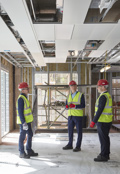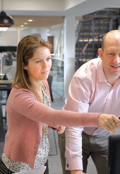What is the most critical factor when deciding if land is suitable for development?
Zanna places planning strategy and financial viability at the forefront: “Developing land can be an expensive endeavour and there are many factors to consider when devising a development strategy for a site. However, it’s critical for landowners to conduct a thorough analysis of the planning prospects and a financial analysis of likely returns before committing to a development project. Understanding the risks and opportunities through this preliminary work helps landowners make informed decisions about whether to proceed with the project, thereby minimizing the risk of potential financial losses. A reputable land agent will provide the necessary guidance and advice the Landowner requires.”
Ian Ashbridge highlights the importance of long-term sustainability: “Landowners should consider the enduring sustainability of the land use. They must assess the development’s impact on soil, water, and air quality over the long haul. What’s more, potential consequences for any existing agricultural business occupying the land cannot be overlooked. Farmers, in particular, need to approach this decision with a holistic perspective.”
Danielle Percy, while agreeing with her colleagues, places an equal emphasis on the feasibility study: “The most important piece of work is the feasibility study. It helps determine whether a new development is financially viable, technically feasible, and environmentally and socially responsible. It forms the cornerstone of any successful project."
Ian Ashbridge concludes with specific advice for green belt land: "If you're considering developing green belt land, it's essential to consider its agricultural land classification. You must ascertain the grade and then produce a comprehensive report with a plan around how to manage Best and Most Versatile Land. This multifaceted approach to planning and development advice is what we, as a firm, can offer—a seamlessly integrated solution."






















